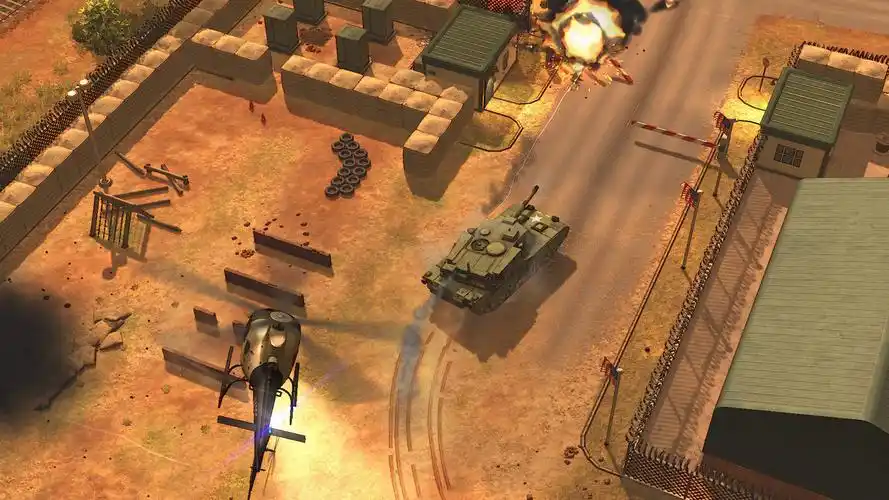Title: The Curator's Code: Building Your Ultimate Deep Game News Feed
In the roaring, algorithm-driven chaos of modern gaming media, staying informed is no longer about consuming more content—it’s about consuming the right content. The average player is bombarded with a relentless firehose of updates: trailer drops, patch notes, influencer hype, corporate press releases, and endless listicles. Yet, beneath this surface-level noise lies a richer, more substantive layer of coverage—what we might call the "Deep Game" discourse. This is where analysis trumps announcement, where critique outweighs celebration, and where the fascinating complexities of game design, industry trends, and cultural impact are unpacked.
Curating a perfect feed for this deeper understanding is an active, rewarding process. It’s about moving from being a passive consumer to an intentional curator. Here’s how to build your ultimate deep game news feed.
1. Define Your "Deep": What Are You Truly Curious About?
"Deep" means different things to different people. Before you start subscribing, take a moment to define your intellectual curiosity within gaming.
- The Technical Deep Dive: Are you fascinated by rendering techniques, the challenges of game engine development, or the intricacies of networking code?
- The Design Analysis: Do you want to understand why a game feels good to play? This path focuses on level design, narrative structure, mechanics, player psychology, and systems thinking.
- The Business and Industry Lens: Is your interest in market trends, corporate strategies, mergers and acquisitions, and the labor practices (like crunch) that shape the games we play?
- The Cultural Critic: This perspective examines games as art and cultural artifacts. It explores representation, philosophical themes, and the societal conversations games spark.
Your perfect feed will be a mix of these, weighted toward your passions. You cannot follow everything, so focus.
2. Escape the Algorithm: Embrace the Newsletter and the Blog
Social media algorithms are designed for engagement, not for depth. They prioritize what is popular and provocative, not what is thoughtful and nuanced. To go deep, you must often go elsewhere.
- Email Newsletters: This is the cornerstone of a curated feed. Writers with specific expertise use newsletters to bypass algorithmic constraints and deliver their best work directly to your inbox. Look for writers from major publications who have independent newsletters (e.g., from Bloomberg's Jason Schreier) or solo critics and analysts (e.g., Alanah Pearce's 'Goodbye'), and platforms like Game Developer for industry-specific insights.
- Dedicated Blogs and Independent Websites: While mainstream sites cover breaking news, smaller blogs often host the most detailed post-mortems and analytical essays. Seek out platforms known for long-form content.
- RSS is Your Best Friend: An RSS reader (like Feedly or Inoreader) is the ultimate curation tool. It allows you to pull content from all your chosen sources—big and small, corporate and independent—into one clean, algorithm-free dashboard. You control the flow entirely.
3. Prioritize Critical Voices Over Hype Machines
A deep feed requires critical thinking. You need voices that question, analyze, and critique, not just cheerlead.

- Seek Out Critical Reviews: Find critics whose tastes and analytical frameworks you respect, even when you disagree with them. They help you understand a game's strengths and flaws on a deeper level than a simple score.
- Follow Developers, Not Just Brands: Individual developers, designers, writers, and artists often share incredible insights on platforms like Twitter, Mastodon, or their personal blogs. They talk about process, challenges, and inspirations, offering a priceless look behind the curtain. Follow them to understand the "how" and "why" of game creation.
- Value Diversity of Perspective: Actively seek out voices from different backgrounds, cultures, and life experiences. A feed filled with homogenous viewpoints will offer a homogenous—and shallow—understanding of games. Different perspectives illuminate different aspects of a game's design, narrative, and impact.
4. Leverage Multimedia for Deeper Dives
Written analysis is paramount, but other formats offer unique and engaging ways to delve deeper.
- Long-Form Video Essays (YouTube): The video essay is a powerful medium for game analysis. Creators can combine gameplay footage, audio, text, and visual aids to deconstruct a game's design, themes, and history in an immersive way. Search for terms like "video essay," "design analysis," or "ludonarrative" to find channels dedicated to this craft.
- In-Depth Podcasts: Podcasts are perfect for deep dives during a commute or workout. Look for podcasts that feature developers as guests, panels discussing industry trends, or critics debating the merits of a game for hours, not minutes. They provide a conversational, nuanced take that written word sometimes cannot.
5. Practice Active Curation: Prune and Refine
Your interests will evolve, and so should your feed. A curated feed is a living entity.
- Regular Audits: Every few months, review your sources. Are you still reading that newsletter? Does that YouTube channel still provide value, or has it shifted to more superficial content? Don’t be afraid to unsubscribe. A cluttered feed is as bad as an algorithmic one.
- Engage and Discover: When you read a fantastic article, see who that author is following or citing. Often, the best way to discover a new deep-dive source is through a recommendation from a trusted existing one.
- The "Save for Later" Triage: Your feed will inevitably contain more than you can immediately consume. Use read-it-later apps like Pocket or Instapaper to save long reads and videos for a dedicated deep-dive session, preventing your inbox or RSS reader from becoming a source of stress.
Conclusion: The Reward of Depth
Curating a deep game news feed requires more initial effort than simply scrolling through a social media timeline. But the reward is immense. You transition from simply knowing what games are coming out to understanding how they are made, why they work (or don't), and what they mean. You develop a richer, more sophisticated appreciation for the medium. You become an informed participant in the conversation, not just a target for marketing. In the end, a perfectly curated feed doesn’t just inform you about games—it helps you understand them.


















